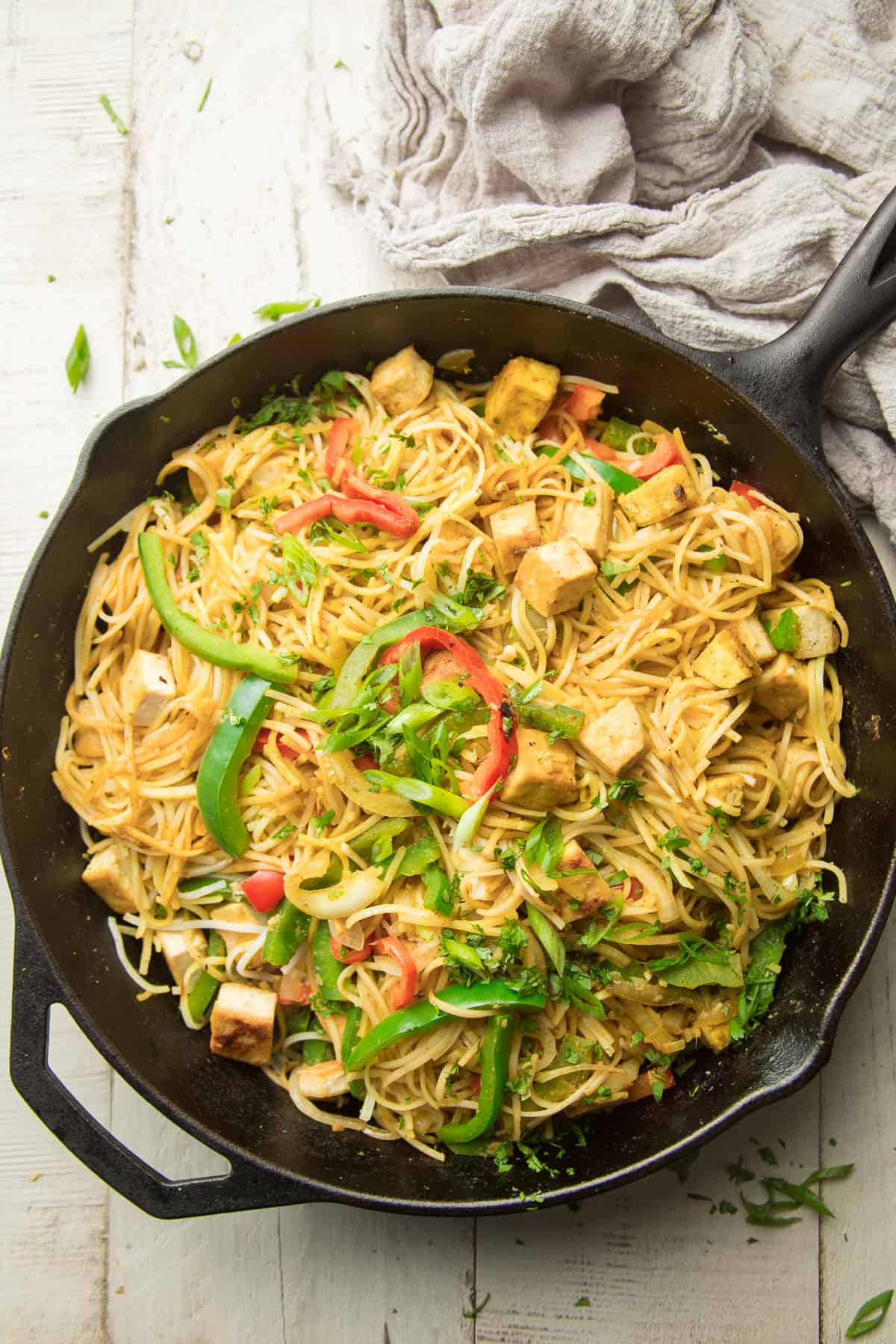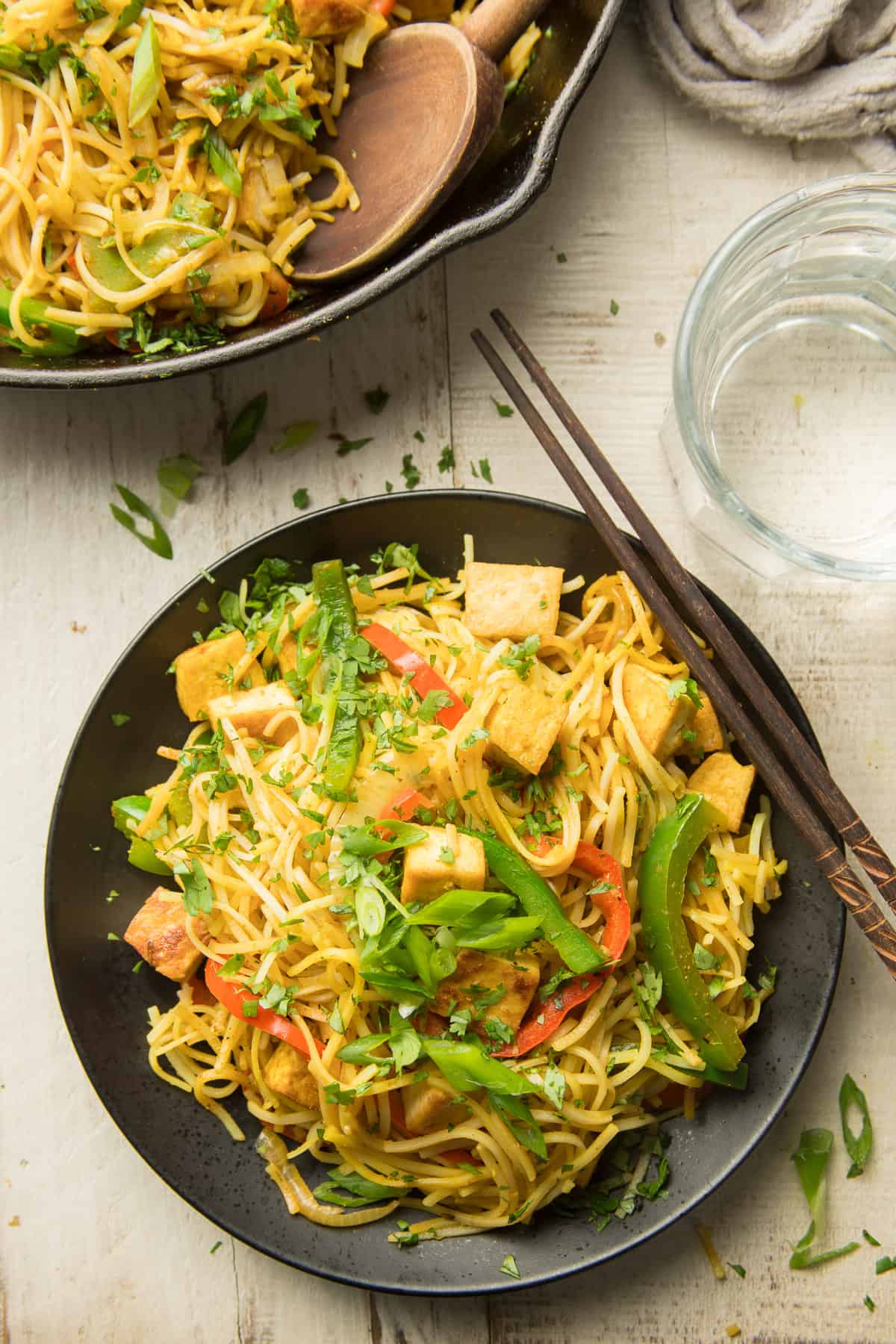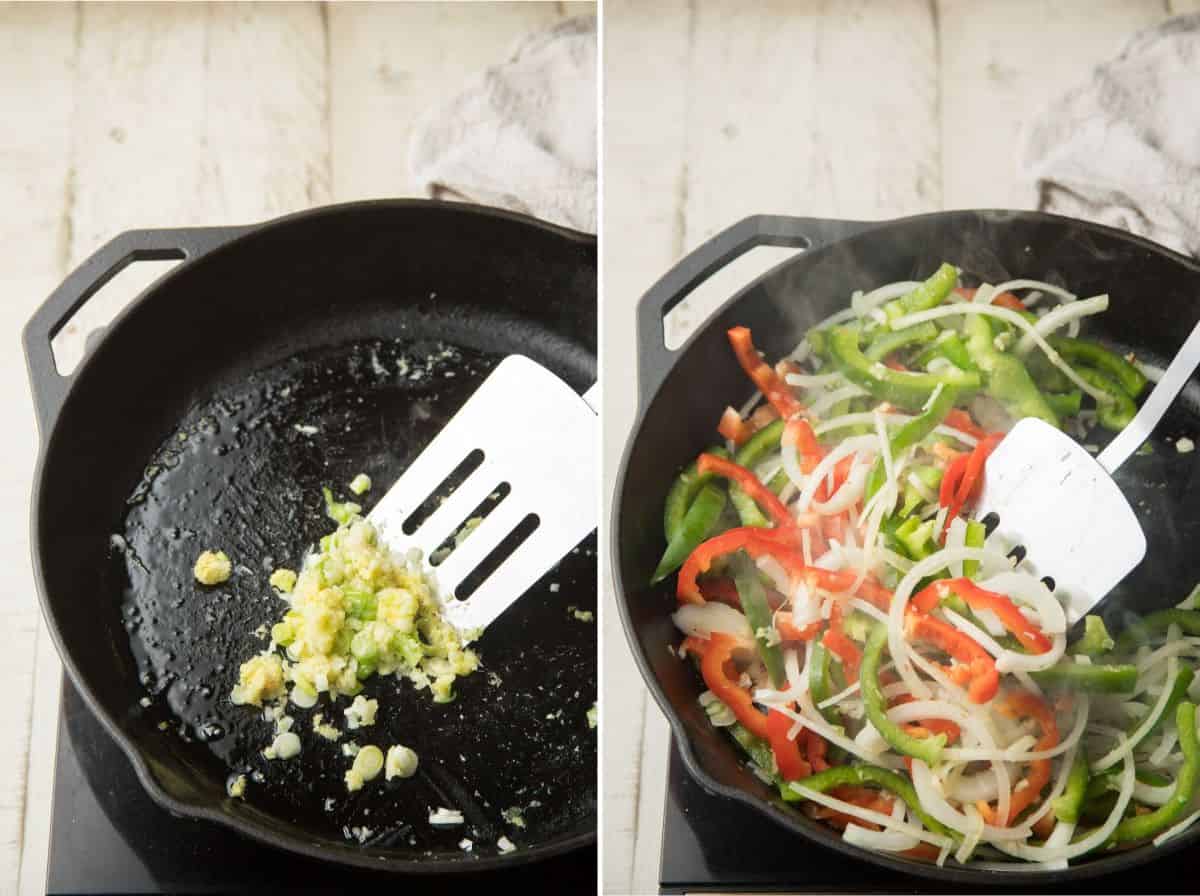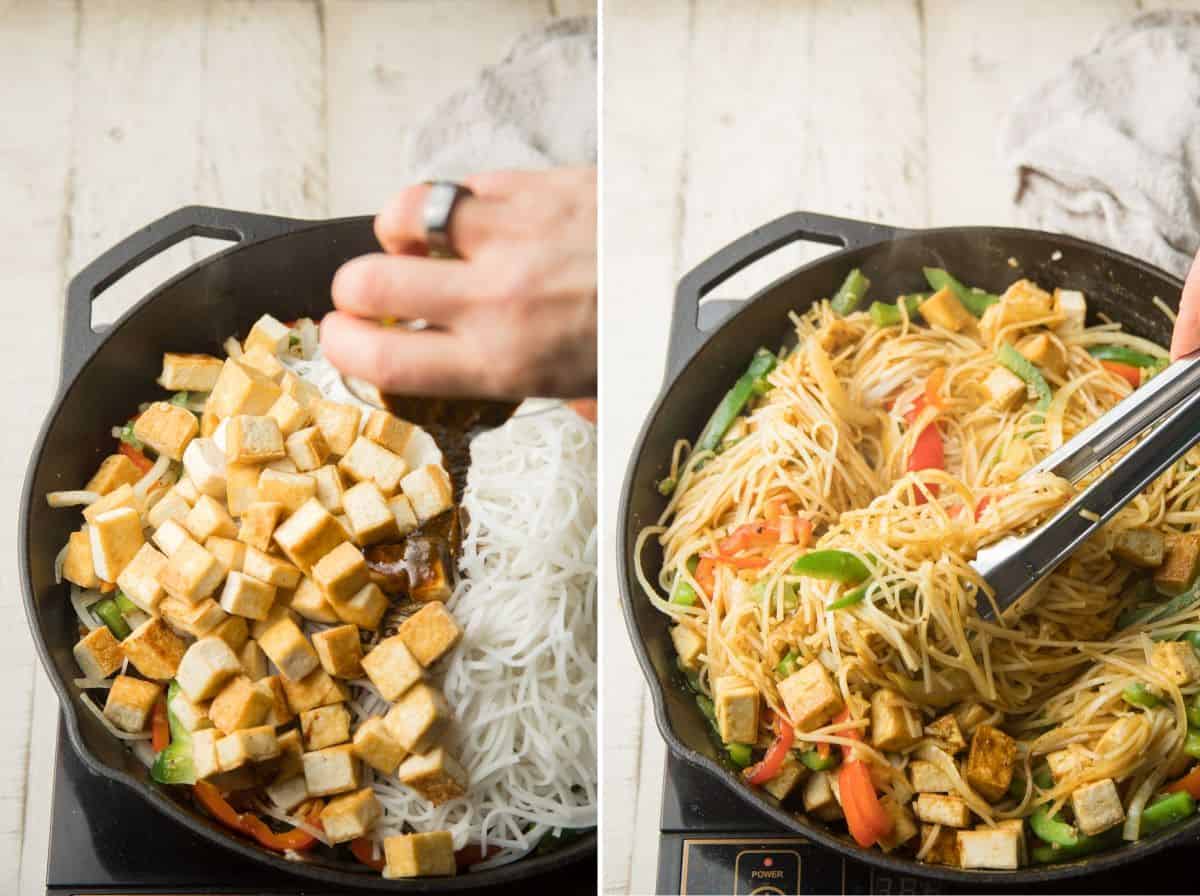Sometimes the best things in life are the simplest! For example, Singapore noodles. Back when I first had a taste of this dish at an Asian fusion restaurant, I thought they were the most amazing thing I’d ever tasted. I wondered what could possibly go into this crazy delicious dish? (This was back in the days before Google provided all the answers.) It wasn’t until years later that I found out that the answer was so simple: rice noodles stir-fried in soy sauce in curry powder. Seriously, that was all? Pretty much!
What Are Singapore Noodles?
Well, there’s a little more to it than that, but not much. Maybe a few extra, really easy to find, spices — my vegan Singapore noodles include turmeric for extra color and sriracha for heat. You’ll usually find some aromatics, like garlic, ginger and scallions, stir-fried veggies, and maybe a protein, like the pan-fried tofu that’s in this version. Supposedly, Singapore noodles didn’t actually originate in Singapore, but it’s not really clear where they did come from. I always make a point of asking when I see the dish on a restaurant menu. I’ve been told by some folks that they’re Chinese (just not as well known as classics like chow mein and lo mein), and then by others that they’re not and nobody knows the real origin. Since I always see them on the menu at Asian fusion places, I simply think of them as that — fusion cuisine.
What You’ll Need
Rice vermicelli noodles. Look for this in the international section of your supermarket. You can substitute wider rice noodles, such as pad Thai noodles, if you can’t find them.Soy sauce. Gluten-free tamari or liquid aminos can be substituted if needed.Curry powder. Use your favorite curry powder here. I like to use a mix of mild and hot curry powders, but you can use all mild if you prefer (all hot would probably make for a very spicy dish, go for it if that’s your thing).Turmeric.Sriracha sauce. Leave this out if you prefer a milder version of the recipe.Tofu. Super firm tofu works best in this recipe. You can use extra firm or firm tofu instead, but you’ll need to press it first.Canola oil. Feel free to use another high-heat oil such as peanut or vegetable oil if you’d like.Scallions.Garlic.Fresh ginger.Bell peppers. We’re using one red and one green pepper. You can absolutely substitute your favorite stir-fry veggies, keeping in mind that softer veggies cook quicker while harder ones take a few more minutes. Broccoli, baby corn, snow peas, and napa cabbage would all work well.Onion.Fresh cilantro. Leave this out if you’re not a fan.
How to Make Vegan Singapore Noodles
The following is a detailed photo tutorial on how to make this dish. Scroll all the way down if you’d like to skip right to the recipe!
Prep your veggies and sauce first. You’ll want every ingredient to be ready to go into the skillet when you need it.Soak your noodles in hot water — this is the best way to soften up rice noodles for stir-frying. Don’t boil them like you would wheat noodles! Rinse the noodles when they’re done soaking and then drain them. Tip: Be sure to drain your noodles really well! There’s nothing worse than ending up with too much water in the pan when you go to stir-fry them. I like to leave them sitting in the strainer after rinsing.Cook your tofu. Pan-fry diced tofu in a lightly oiled skillet over medium heat. Cook the pieces for a few minutes on each side, until they’re crispy and golden. Then remove them from the skillet or wok. Need more guidance on this cooking method? Check out this guide to pan-frying tofu.
Cook your aromatics. Add some more oil to the skillet and briefly sauté minced garlic, grated ginger, and just the white parts of your scallions. Just give them a minute to heat up and begin to release they’re aromas.Stir-fry the vegetables. Turn up the heat before adding them to the skillet. Flip them frequently so they cook evenly. It should only take a couple of minutes for the onions to soften and the peppers to become tender-crisp.
Add noodles, sauce, and cooked tofu to the skillet. I like to use a fork or a pair of tongs to separate the noodles and get them evenly coated with sauce. Stir-fry everything until the noodles begin to dry out and crisp up where they touch the skillet.
Take your skillet off of the heat, and sprinkle your vegan Singapore noodles with cilantro and the green parts of your scallions. Dig in!
Leftovers & Storage
Leftover vegetarian Singapore noodles will keep in a sealed container in the fridge for about 3 days.
More Vegan Noodle Recipes
Vegan RamenVegan Shanghai NoodlesSesame Peanut NoodlesTeriyaki NoodlesSesame Soba Noodles
Like this recipe? If so, be sure to follow me on Facebook, Pinterest or Instagram, or subscribe to my newsletter. And please stop back and leave me a review and rating below if you make it!






